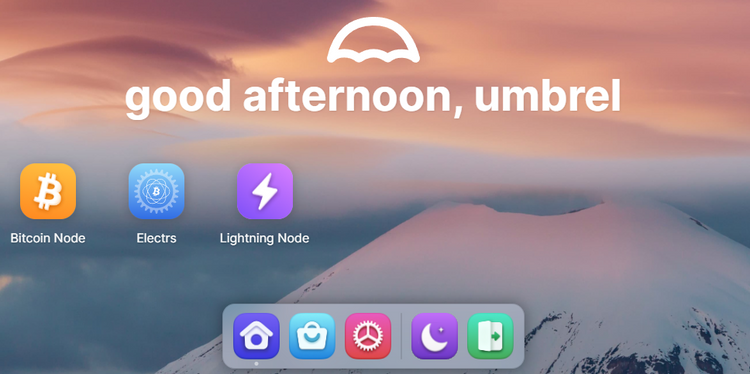Dynamic NFTs - are they the future?

When people hear non-fungible tokens (NFTs), most will still be thinking about the most prominent examples that made the headlines last year, Cryptopunks, Bored Ape Yacht Club or even the Moonbirds. But NFTs just got supercharged and this time you can expect more than a static image.
The concept of NFTs and how they differ from traditional cryptocurrencies like Bitcoin
NFTs, or non-fungible tokens, are unique digital assets authenticated on a blockchain. On the other hand, traditional Bitcoin is a digital currency used for transactions and is based on decentralized blockchain technology.
One key difference between NFTs and traditional Bitcoin is that NFTs are not interchangeable or divisible, meaning that each NFT has a unique value and cannot be divided into smaller units like Bitcoin. NFTs are often used to represent digital collectables, art, or other unique items, while Bitcoin is primarily used as a means of exchange.
Overall, while both NFTs and traditional Bitcoin are based on blockchain technology, they serve different purposes and have unique characteristics.
Explanation of dynamic NFTs and how they differ from static NFTs
Dynamic NFTs are a type of non-fungible token that can be changed or updated over time, while static NFTs are fixed and cannot be altered once they are created.
Dynamic NFTs are often used to represent digital assets that can evolve or change, such as games, (virtual real) estate, or other interactive experiences. These NFTs can be updated by the creator or by other users who have permission to do so, allowing for a more dynamic and flexible experience.
In contrast, static NFTs are typically used to represent unique digital assets that do not change, such as art, collectables, or other one-of-a-kind items. These NFTs are fixed and cannot be altered once they are created, providing a level of authenticity and scarcity that is unique to each individual NFT.
Overall, the key difference between dynamic and static NFTs is their ability to be changed or updated over time. Dynamic NFTs offer more flexibility and interactivity, while static NFTs provide a sense of permanence and uniqueness.
Benefits of dynamic NFTs
- Flexibility and interactivity: Dynamic NFTs can be changed or updated over time, allowing for more flexibility and interactivity compared to static NFTs.
- Increased value: Because dynamic NFTs can be updated or evolved, they can potentially increase in value over time, providing a potential source of revenue for creators and owners.
- Greater user engagement: Dynamic NFTs can provide a more immersive and engaging experience for users, encouraging them to continue using and interacting with the digital asset.
- Enhanced security: Dynamic NFTs can be updated with new security features or other improvements, making them more secure and resistant to fraud or hacking.
- Better scalability: Dynamic NFTs can be easily adapted and expanded to support new features or capabilities, making them more scalable and adaptable to changing market conditions.
Examples of current and potential uses for dynamic NFTs
Games and virtual experiences: Dynamic NFTs can be used to represent virtual assets or items in games and other interactive experiences, allowing for a more immersive and dynamic experience for users.
(Virtual) real estate: Dynamic NFTs can be used to represent (virtual) land or property, allowing users to buy, sell, and trade these assets.
Collectables: Dynamic NFTs can be used to represent unique and valuable digital items, such as rare trading cards or other collectables, providing a more interactive and engaging experience for collectors.
Digital art: Dynamic NFTs can be used to represent unique digital artworks, allowing creators to update or evolve their creations over time, providing a more dynamic and participatory experience for fans and collectors.
Digital tokens: Dynamic NFTs can be used to represent various types of digital tokens, such as rewards, tokens of ownership, or other types of assets.
Challenges and limitations of dynamic NFTs
The first challenge is the potential technical complexity: creating and managing dynamic NFTs requires specialized knowledge and skills in blockchain technology and smart contracts. Secondly, scalability comes into play: dNFTs may face scalability challenges as the ability to update or evolve a digital asset can increase the amount of data and transactions that need to be processed on the blockchain. Thirdly, one of the more important points is security: dNFTs may be more vulnerable to hacking or fraud as the ability to change or update an NFT can create additional security risks if not implemented properly. Furthermore, user adoption will be a challenge to overcome: dNFTs may face challenges in terms of user adoption as some users may be hesitant to use or invest in digital assets that can be changed or updated over time. Last but not least is the potential regulation: Dynamic NFTs may face regulatory challenges, as the evolving nature of these digital assets may not fit neatly into existing legal frameworks or regulatory frameworks.
Conclusion
In conclusion, dynamic NFTs are a unique type of non-fungible token that can be changed or updated over time, providing more flexibility and interactivity compared to static NFTs. Dynamic NFTs have a range of potential uses, including in games and virtual experiences, real estate, collectables, digital art, and digital tokens.
However, dynamic NFTs also face challenges and limitations, including technical complexity, scalability issues, security risks, user adoption challenges, and regulatory hurdles.
Overall, the future outlook for using dynamic NFTs in the blockchain and cryptocurrency space is positive, as these digital assets offer unique benefits and capabilities that can enhance the user experience and increase the value and utility of blockchain technology. As the use of dynamic NFTs continues to grow and evolve, they are likely to play an increasingly important role in the broader ecosystem of blockchain and cryptocurrency.



Comments ()